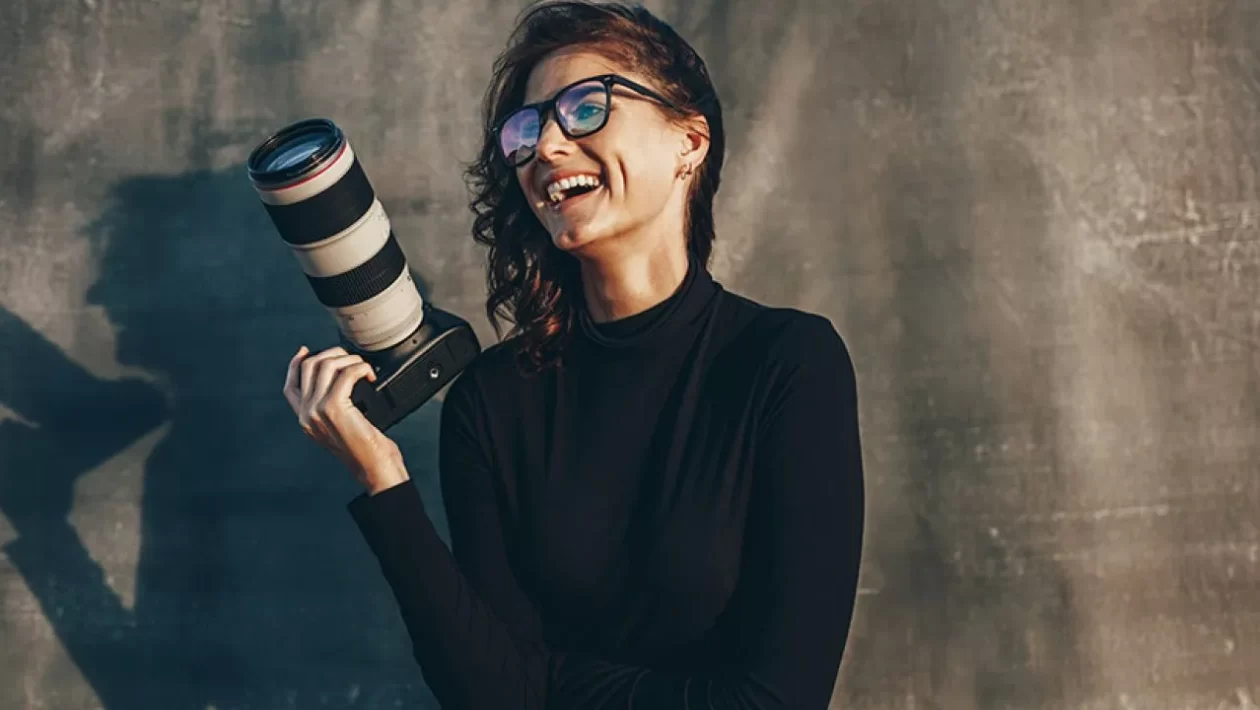Portrait photography transcends the mere capture of faces, intimate art that freezes the human experience into a timeless frame. Meg Bitton, the renowned digital photographer, is a paragon of this craft, depicting soulful human connections through her lens. This journey for each photographer is unique, as is the challenge to render the invisible visible. Below are cultivated tips to guide you through mastering the graceful art of portrait photography.
Key Takeaways
- Deep dive into the essential camera settings tailored explicitly for portrait photography, influencing the quality and impression of your photographs.
- Explore the nuanced relationship between photographers and subjects, which defines the emotional depth of the portraits.
- Compose your shots with thoughtful consideration of color theory, and enhance the final image with adept post-processing techniques.
- Understand how to transform your passion for portrait photography into a sustainable business with strategic marketing and portfolio development.
Introduction to Portrait Photography
Mastering the nuances of portrait photography encompasses a broad and intricate skill set. This style demands technical expertise and a compassionate approach to connecting with your subjects. Meg Bitton, renowned digital photographer, has exemplified these principles in her work. With each shutter click, a story is told, an identity preserved, and a moment in time celebrated. The essence captures more than a face—it encapsulates a personality, an atmosphere, and an emotion that resonates with the observer.
Mastering the Camera Settings for Portraits
Conquering the camera settings is crucial for a portrait photographer. The symbiosis of aperture, ISO, and shutter speed sets the foundation for a compelling photograph. Understanding depth of field, achieved through aperture adjustments, is essential in differentiating your subject from the backdrop. ISO settings help manage the light sensitivity of your camera, a key consideration in environments where lighting can be unpredictable—like during an outdoor shoot or in a dimly lit room. Lastly, shutter speed can differ between a sharp portrayal of a serene moment and a dynamic capture of laughter in motion. These elements are tuned like an orchestra to create a visual symphony that celebrates human uniqueness.
The Human Element: Connecting with Your Subject
A visceral part of portrait photography is the bond between the photographer and the subject. It all begins with cultivating a space of comfort and trust where subjects can be authentic. This genuine rapport allows the camera to capture authentic emotions as the lens becomes less of an intrusive tool and more of a silent observer of raw human moments. In these fortunate instances where the subject drops, a photographer can snap the shutter to immortalize genuine expressions full of life stories.
Composition Strategies for Striking Portraits
Composition in portrait photography is structuring visual elements to guide the viewer through the photograph and convey a story. The rule of thirds suggests that the subject be placed off-center to create a more balanced and exciting frame. The choice of background plays an equally impressive role – a chaotic backdrop could distract, while a simplistic or blurred environment could glorify the subject. Symmetry, leading lines, and frameworks are additional compositional tools that can accentuate different aspects of the subject, adding depth to the captured scene.
Color Theory in Portrait Photography
Captivating portraits often possess a mastery of color that speaks silently to the viewer. Warm tones may imbue a photograph with intimacy and nostalgia, while cool hues offer a sense of calm or melancholy. The strategic use of color can amplify the mood of a portrait or draw attention to a specific element, such as vibrant eyes or flushed cheeks. By employing color theory, photographers wield the power to enhance narratives and stir emotions, making unforgettable portraits.
Post-Processing Techniques
The journey of a portrait doesn’t come with the click of a shutter – skillful post-processing is a crucial step in bringing a photographer to fruition. Basic adjustments in exposure and contrast can illuminate a subject, while retouching can smooth out imperfections carefully, ensuring the subject retains its unique characteristics. The Human Connection in Portrait Photography delves into the cautious approach necessary to maintain the subject’s authenticity while executing artistic enhancements that elevate a portrait’s quality, concluding that effective post-processing requires a deft and delicate touch.
Leveraging Natural Environments for Outdoor Portraits
Outdoor settings offer a dynamic canvas teeming with possibilities. Unlike the controlled environment of a studio, the unpredictability of natural light provides an inherent spontaneity to the images. Understanding how to use sunlight on one’s skin is an invaluable skill. For instance, the soft light during the golden hour casts a warm, diffused glow beneficial for portraits. Meanwhile, overcast conditions can create a natural softbox effect, eliminating harsh shadows and providing flattering, even light. Choosing a location that resonates with the subject can also add a personal narrative to the image, creating a connection that transcends the physical space.
Studio Portraiture vs. Environmental Portraiture
The decision between studio and environmental portraiture alters the photographs’ essence. In a studio, the photographer has ultimate control over every variable, ensuring the consistency of results. However, bringing a subject into their environment can support storytelling elements by including aspects of their lives. Neither approach is superior; instead, both have their place depending on the story you wish to tell through your lens.
Staying Inspired and Evolving Your Style
Inspiration and individuality are what differentiate good photographers from great ones. By observing the works of past and contemporary masters, photographers can find inspiration while developing their unique voices. Your signature style is your trademark in portrait photography, resulting from your experiences, preferences, and the stories you aim to tell. While inspiration is everywhere, assimilation should not lead to imitation; each photograph should reflect your vision.
The Business of Portrait Photography
The leap from photography as a passion to a profession involves embracing the art of business. Navigating this transition can be challenging but is equally rewarding. Constructing a solid online presence, showcasing your unique portfolio, and leveraging marketing strategies are vital steps to getting noticed in the competitive field of photography. Marketing Strategies for Modern Photographers provides an array of techniques to elevate your brand, attract new clientele, and maintain meaningful relationships with ongoing customers—essential practices for the ambitious professional keen to carve out a sustainable career in the industry.





